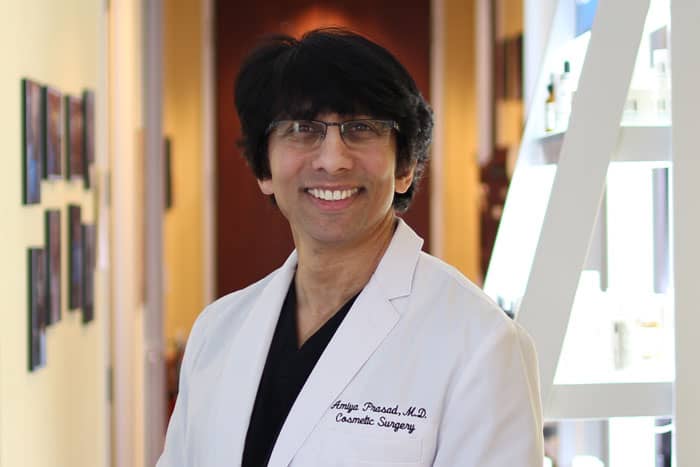The Importance of Facial Volume: Understanding the Reality Beyond ‘Beauty Is Only Skin Deep’
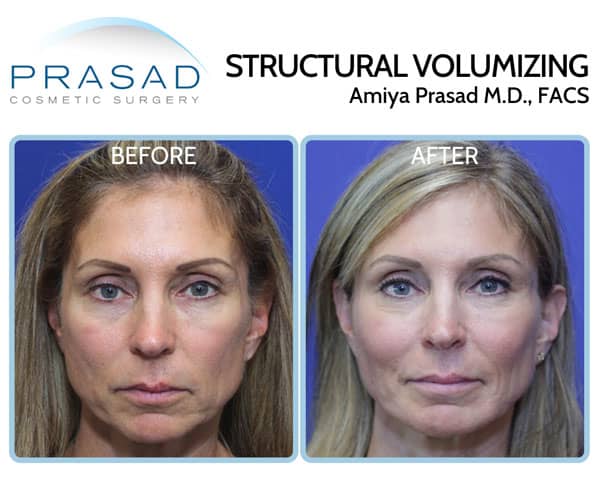
We’ve all heard that beauty is only skin deep, which may be conceptually correct, but when it comes to the perception of external appearance, beauty goes far deeper than the skin to the bone structure. We recognize a youthful face by its fullness, volume, definition, and proportionality. Your bone structure serves as the foundation for these desirable characteristics. Models, for example, are frequently praised as possessing “high cheekbones”.
Not only does the outside skin quality change as we age, but there is also a decrease in facial volume. In my experience, loss of facial volume occurs before considerable skin laxity. Facial volume diminished with age, but some people have genetic bone volume deficiencies that can be apparent even in their 20s. When it comes to aging, face volume loss encompasses the loss of facial fat, soft tissue, and skin thinning, but it’s bone volume where the most substantial loss occurs.
Why Facial Volume Matters More than Skin Deep Fillers
When you understand that facial volume loss happens mostly at the bone level, it makes sense to focus on increasing bone volume. Most doctors and other injectors do not address bone volume in conventional treatment, instead place filler at the skin level. Anatomically, those spaces cannot hold the well-intended shapes formed by the practitioner.
Simply put, the space just beneath the skin cannot keep that much filler volume in one location, so the fillers tend to move, making one look bloated, floppy, doughy, and obviously unnatural. Certain celebrities and media people made this appearance famous, coining the name “pillow face“. This, of course, frightens many people who are scared of appearing unnatural.
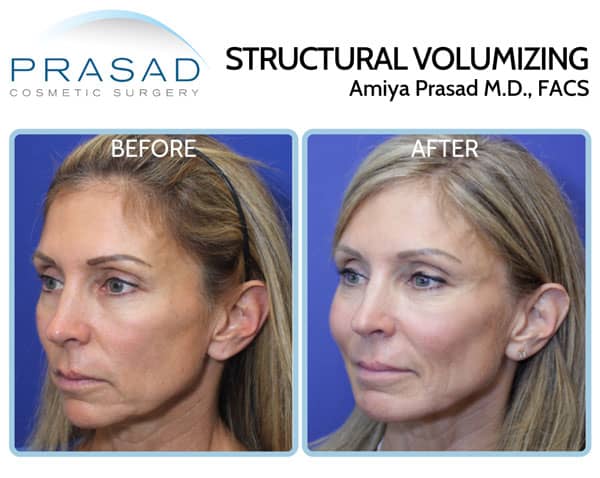
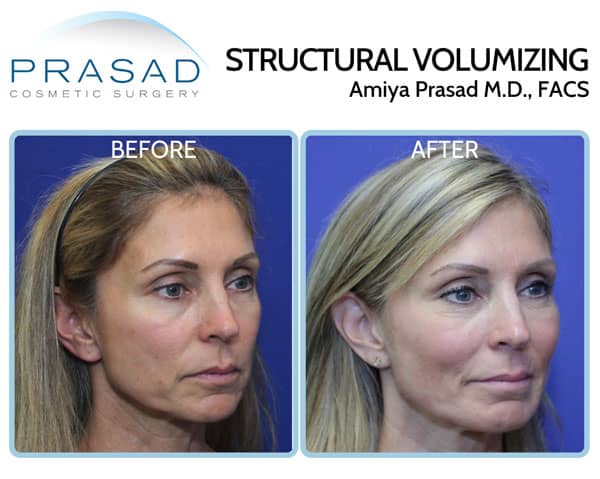
How to Avoid a “Pillow Face” from Filler
Every day in my clinic, I teach my patients that the “pillow face” look is caused by the method the filler was administered, not the filler itself. What I do in my practice to treat volumetric bone loss is place fillers at the bone level. Most practitioners do not do this, in my opinion, because injecting filler at the bone level requires specialized technical expertise and experience.
Although this is a non-surgical technique using injectable hyaluronic fillers, I believe that surgical knowledge gained through experience with facelift and facial implant surgery allows me to accurately put the filler at the bone level. At the deepest level, the bone structure serves as the face’s robust, basic framework.
This solid foundation enables for more filler material to be put than is often done, resulting in a defined and proportional appearance that appears natural. This is quite contradictory, as it is commonly considered that people who appear doughy have too much filler in their faces. This is somewhat correct in that they may have had less volume than I would at the bone level, but they had too much volume for the more superficial space where the filler was placed.
I’m frequently questioned why the filler doesn’t spread out with my technique like it does in other people who appear “pillowy”. Essentially, I place the filler at bone level, with muscle structure on top of the bone. The muscle layer above the bone appears to maintain the filler in place, addressing the concern of filler migration. Our patients frequently indicate that their friends and family think they look terrific, but they can’t explain why.
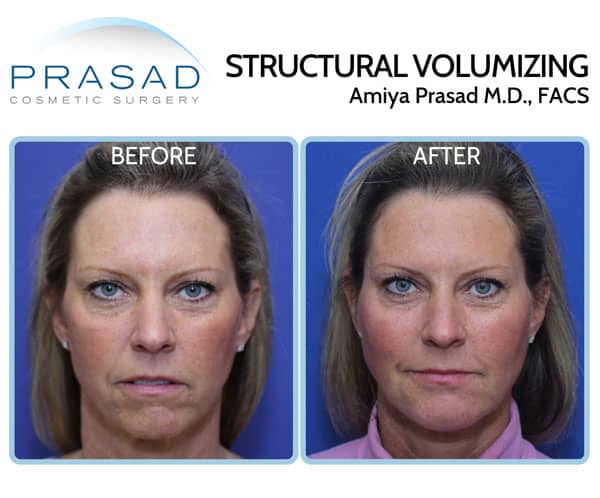
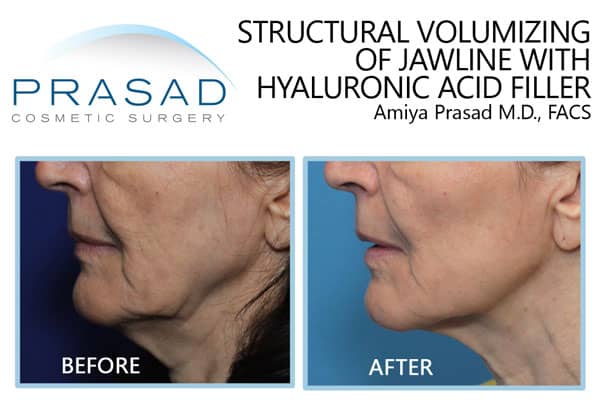
Since enhancing volume recovers most of the lost support structure of the face, the skin regains support, resulting in a lifting effect.
Structural Volumizing for Facial Rejuvenation
We call this treatment Structural Volumizing since the filler volume restores facial structure. It can be regarded as a non-surgical facelift for adults in their 40s and 50s who do not have significant skin laxity. I must emphasize that this is not an alternative for a surgical facelift, but rather a method of addressing an issue that a facelift does not address.
In fact, many of my patients have had previous face lifts and are thrilled to get Structural Volumizing instead of another facelift. For Structural Volumizing, I utilize more viscous hyaluronic acid fillers that can last 1-2 years. Hyaluronic acid exists naturally in the body, therefore these fillers are safely and progressively metabolized over time. If necessary, hyaluronic acid fillers can be dissolved with the injectable enzyme hyaluronidase. If you are considering facial rejuvenation, keep in mind that a youthful appearance is not only determined by the skin, but also by the bone structure that supports it.
If we’ve learned anything from history, overtightened skin isn’t youthful. In my perspective, looking youthful is more accurately described as looking healthy and lively. You can achieve this by striking the correct mix of volume, proportion, and definition. I hope this information from my experience was helpful to you.
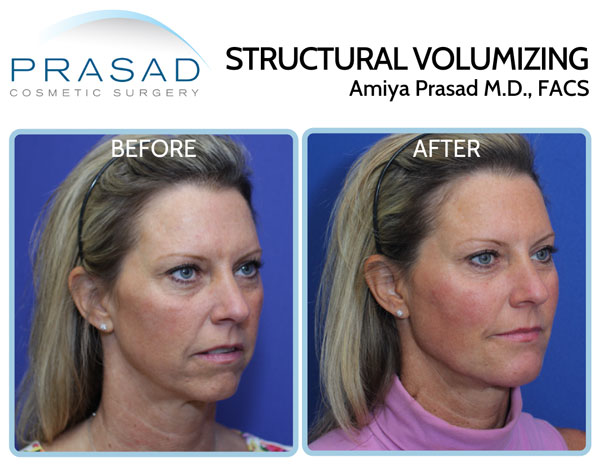
Facial Rejuvenation Manhattan NYC and Long Island, New York
Dr. Amiya Prasad is a Board-certified cosmetic surgeon and Fellowship-trained oculofacial plastic and reconstructive surgeon. He’s been performing facial rejuvenation surgeries, including facelifts and facial implants, for over 25 years in New York City and Garden City, Long Island. He routinely performs non-surgical procedures, such as injectable filler treatments to address age-related facial volume loss and laser skin rejuvenation. If you’re interested in recommendations for your individual situation, you may contact us by filling out the form below or by calling any of our offices at (212) 265-8877 for Manhattan, New York City; (516) 742-4636 for Garden City, Long Island; or (703) 356-1336 for Vienna, Virginia.

